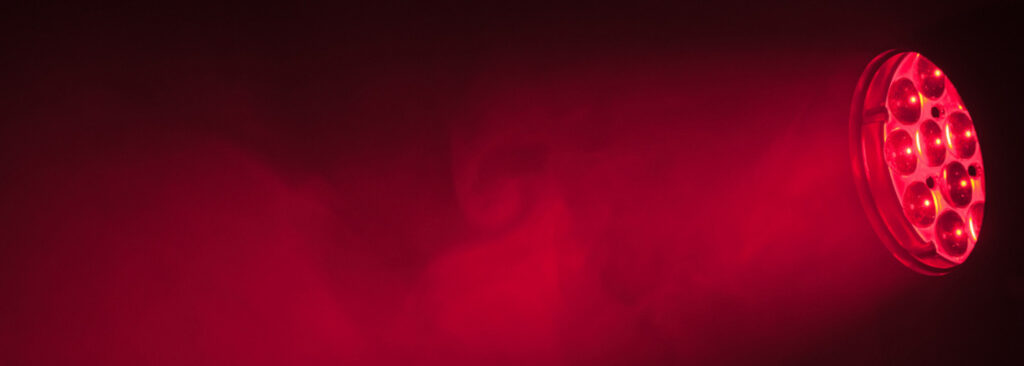Light therapy is a way to ease seasonal depression and several skin conditions. Two of the most common therapies- bright light therapy and red light therapy use different wavelengths of light to mimic sunlight to treat the conditions.
To treat winter blues or seasonal depression, light therapy uses high-intensity light to boost serotonin or happy hormone production. And the red light therapy uses a low-level laser to leave a positive impact on skin and mood. Light therapies work best under certain factors, and we will walk you through those as well in this article.
Contents
How Light Therapy Works?
You can go to a spa, clinic, or dermatologist’s office to take light therapy sessions. Also, it is easy to use at home. All you need is a light therapy box or lamp. If the box has lower intensity light, you need to go for longer sessions. Otherwise, a 10 to 15 minutes session for the initial four weeks is enough to notice the result.
You need the plugin, turn the device on, and sit close to it. The light therapy boxes used to ease Seasonal Affective Disorder (SAD) spread high-intensity light. So, it would be best if you sat 16 to 21 inches farther from the device. Otherwise, it can cause skin burn.
The light therapy boxes filter out harmful UV rays and simulate outdoor sunshine. It penetrates your body to boost the production of the serotonin hormone. And this hormone helps to feel good about yourself and reduces the SAD symptoms.
Using a red light therapy (RLT) box affects your physical and mental health at the same time. It does not help with SAD, but it sure does help to ease symptoms of dementia. Because RLT helps produce more melatonin hormones essential to fix unusual sleep cycles. Dementia patients who take RLT for about 12 weeks tend to sleep better and have better memories.
RLT also boosts your collagen production level so that your skin can look healthier and young. Its light energizes the skin cells and makes them more nutritious to fight pigmentation and aging.
Also, the RLT helps to give a boost to your blood circulation and follicles. This process helps to keep your hair healthy and long. And proper blood circulation also eases your jet lag. So after a long day, you can count on it to minimize your fatigue.
How To Get The Best Results from Light Therapy?
The light therapies work differently on different people. But generally, the below-listed factors can facilitate the effectiveness of light therapy if you choose to take this therapy at home.
- Light Intensity
- Consistency
- Timing
- Light Intensity
Getting the proper lightbox is the key to getting the most out of your therapy sessions. If you install a lightbox at your clinic or home spa, make sure the light intensity ranges from 2500 to 10000 lux. If the light is not intense enough, it will not penetrate deeper and hit different tissues.
For treating skin conditions or improving skin health, you need a red lightbox with a minimum of 2500 Lux. And to uplift your mood or treat seasonal depression, a lightbox with 10,000 Lux is recommended.
2. Consistency
If you decide to take light therapy, you need to be patient enough. It will be best if you stay consistent to get the expected results. Based on your skin type or health needs, you might need 20 to 30 sessions. But if you decide to leave the sessions halfway, you can not expect to get the results.
After getting your desired results, if you stop using the RLT or Light Therapy for SAD, the improvements will not sustain. The SAD symptoms can return, or the skin issues can pop up again if you do not use the therapies once in a while.
3. Timing
Though there is no specific timing to use RLT or any form of light therapy, most people have reviewed that light therapy works best for them when it is done in the morning.
Also, remember that at least 10 to 15 minutes of therapy session is a must to get the results. Before using your therapy box at home, check the manufacturer’s guide if the RLT box has 2,500 Lux; you need to take longer sessions for 15 to 20 minutes each.
It will be best to consult your doctor before going for therapy. Your physician can help you determine the timing or schedule that works best for you based on your skin and health conditions.
Does Light Therapy Have Any Side Effects?
This type of treatment is generally safe. But there is no guarantee that it will not leave any side effects on you. And believe it or not, our carelessness causes most of them.
Initially, the high-intensity light of the system will cause nausea and headache. However, if you use light therapy regularly, you will get used to the intense light. And those side effects will pass quickly.
If you overdo the therapy sessions for more than 20 minutes a day, you might get difficulty getting to sleep. But you can fix this issue by minimizing the dosage you take or moving farther from your therapy systems.
To get the best result from the therapy, you need to keep your eyes open. But that does not mean you need to stare directly into the red light. Especially if you have poor eye vision or diabetes, these health issues make your eyes vulnerable to light damage. So, it is better to engage yourself in other tasks while you are in a therapy session.
If you are on anti-inflammatory or any medications that increase your skin sensitivity to sunlight, you must consult your doctor before taking the therapy. Otherwise, you might suffer from skin irritation because of the medicines you take.
The light therapy that treats SAD might not be a good treatment for people with bipolar disorder. It can trigger mania in them. But the Red Light Therapy will not be much of a problem.
Bottom Line
Any form of light therapy- be it Red, Blue, or light therapy for mood uplifting does not guarantee to cure your issues. The therapy sessions only help ease the depressive symptoms and keep your skin healthy for a more extended period.
The therapy boosts your energy level to help you stand against the mood swings during seasonal depression. And specifically, the RLT helps sustain the oxygen and nutrients on your face surface to fight against blemishes and premature skin aging. If you are not suffering from any chronic health issue, the RLT will work faster on you.
Every form of light therapy gets expensive after a few sessions. But if you can manage to get your lightbox devices at home, it will be an affordable deal within $2500 to $6000. And you can quickly continue the sessions whenever you want. Whether you are on medications or not, it is better if you consult a physician before using it to avoid any health hazards.
Frequently Asked Questions
- Do Infrared Therapy and Light Therapy Work the Same?
No, they do not. Light therapy mainly uses different wavelengths of laser and LED light to treat different health conditions. Those lights can penetrate even deeper than 3 inches into the tissues to facilitate wound healing. And they hardly cause any injury. On the contrary, infrared therapy uses only infrared light that penetrates approximately 3 inches and can sometimes cause thermal injuries or burns.
2. Can Regular Overhead Screw-in Bulbs Become the Alternative to Light Therapy?
No, not. Unlike light therapy, regular bulbs do not have the specific 10,000 Lux intensity to treat your SAD or other health conditions. Bulbs’ design spreads the light over a greater area, so you do not get ambient lighting above 600 lux. But the lumens or amount of the light therapy is so intense that it can penetrate and hit different tissues to treat you.
3. Does Light Therapy Increase Vitamin D Levels?
To stimulate vitamin D production, you need to expose your body to ultraviolet B (UVB) light. But the most common forms of light therapy, including Red Light (RLT) and SAD Light Therapy, do not use UVB light. So, light therapies will not give a boost to your vitamin D levels.
4. Do Insurance Companies Cover the Purchase of Light Therapy Systems?
The Red Light and SAD light therapies are growing in popularity because of their health benefits. And many private insurance companies have started recognizing the benefits, so they cover your purchase. But you need to provide a prescription from your doctor before getting medical insurance. It is better if you call the insurance company to know how much coverage you can get and what documents are required.
5. Does Light Therapy Cause Tanning?
The light therapy that treats SAD does not tan your skin. But the Red Light Therapy that mainly treats skin conditions does tan you. Because the UVA ray needed for skin tanning is not filtered out in RLT devices, unlike other light therapy systems.





More Stories
Rajkotupdates.news: Corona Third Wave Affect Life Insurance
Benefits of Drinking Water for Optimal Health
Rajkotupdates.news: Drinking Lemon is as Beneficial